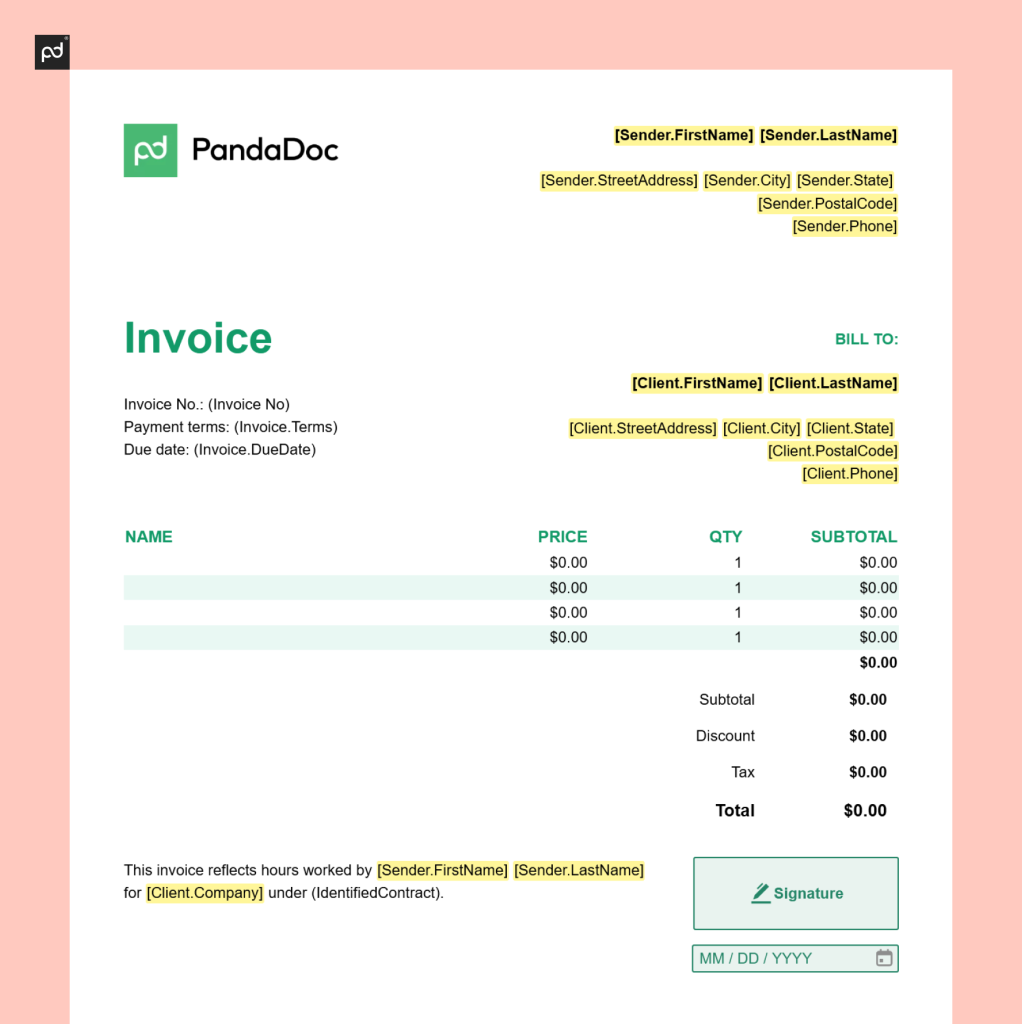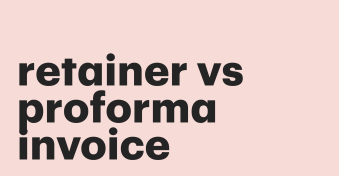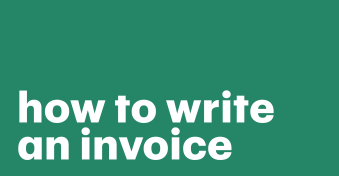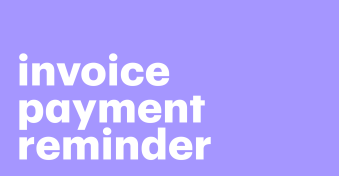Whether a startup or an established business, you’re bound to encounter purchase orders and invoices along the way.
Both are critical documents for business continuity and revenue.
In this guide, we’ll explain all you need to know to eliminate purchase order vs invoice confusion.
Key takeaways
- Purchase orders and invoices have similar information, such as item descriptions and prices.
- A buyer issues a purchase order to initiate a transaction, while a buyer issues an invoice to request payment.
- Once the vendor confirms a purchase order, it’s a legally binding contract.
- Document templates make it easy to generate purchase orders and invoices.
- Payment solutions like PandaDoc streamline purchase order and invoice management and payment processing.
What is a purchase order?
A purchase order is a document sent by a client or buyer to request goods or services.
It contains details such as customer information, items, and the price per unit.
Once the purchase order is received and confirmed by the vendor, it’s legally binding.
A purchase order is also known as a PO. It’s easy to understand the aim by breaking down the name.
The client has placed an “order” and agrees to “purchase” or pay the stated amount after fulfillment.
Sound interesting?
Read more here about purchase orders and contracts.
What information does a purchase order contain?
Purchase orders help the client and vendor stay organized and understand expectations.
POs contain relevant information for confirmation, reference, and accounting purposes.
Purchase orders include:
- Buyer’s company name and address
- Seller details
- PO number
- Date of purchase
- Description and quantity of goods or services ordered
- Unit or time price
- The total amount ordered
- Delivery information
- Tax information
- Any terms and conditions
- Additional notes, if necessary
When does a business use a purchase order?
Businesses use purchase orders as part of the procurement process.
A PO is one step in the approval process for larger purchases and ensures the company only spends money on goods and services it needs.
First, you draft a purchase requisition and send it to decision-makers for approval.
Once signed, you send the PO to the vendor. Once the vendor confirms the PO, you’ve jointly created a contract of sale.
Purchase orders are also used after the completion of vendor selection.
When looking for a new supplier or service provider, businesses field bids from interested parties.
A PO finalizes the selection process and establishes business with a new seller.
POs are also used when companies enter a blanket purchase order agreement with a vendor.
Some businesses send purchase orders as part of bulk ordering. These are partial orders that make up a larger, agreed-upon whole.
What is an invoice?
An invoice is a request for payment issued by the seller.
It’s normally issued after goods or services have been delivered.
Invoices inform clients of the delivery and how much they need to pay.
What is an invoice besides a formal bill? Well, an invoice contains identifying information, such as an invoice number.
It’s a transactional document often used when customer credit is involved.

What information does an invoice contain?
An invoice is a record of a transaction between a seller and a buyer.
It contains the necessary information to facilitate the payment for fulfillment of goods and services.
Invoices include:
- Vendor name and address
- Buyer account number and other details
- Invoice number or ID
- Corresponding PO number
- Date of order or purchase
- Itemized lists of goods and services
- Price and quantity of each item
- Delivery address and date of fulfillment
- Shipping costs
- Total amount owed
- Tax, if applicable
- Payment due date
- Accepted payment methods, including vendor bank details
When does a company use an invoice?
A company uses an invoice after delivering goods or services to a customer on credit.
Often, an invoice isn’t necessary for small transactions as you can pay upfront.
However, an invoice also serves as a record of a received and fulfilled purchase order.
Some examples of invoice use cases include:
- Billing a client for consulting services
- Providing a monthly service with a recurring bill
- Large purchases paid off in installments
- Selling bulk orders to clients
- Fulfilling a PO from a regular customer
What is the difference between purchase order and invoice?
Purchase orders and invoices are integral parts of the sales process, so it can be easy for people to think they’re synonymous.
For consistency and legal reasons, you should know the difference between a purchase order and an invoice.
Take a look at the table below for clarification.
| Purchase order | Invoice | |
|---|---|---|
| Document purpose | Request delivery of goods and services | Request payment for goods and services |
| Who sends the document? | The buyer | The seller |
| What does it confirm? | Purchase or order approval | Delivery or fulfillment of the purchase |
| When is the document generated? | Created after the approval of a purchase order | Created after the vendor fulfills the order |
| What information does the document contain? | Buyer and seller detailsPO numberDescription, quantity, and price of goodsOrder dateTax informationTerms and conditions | Buyer and seller detailsInvoice numberPO numberDescriptions, quantity, and priceDelivery or shipping date plus costsTotal price plus tax, if applicableHow to payPayment due date and termsApplicable discounts or late fees |
Purchase order vs invoice: what are the similarities?
Okay, now you’re privy to the difference between an invoice and a purchase order, but what are their similarities?
The table below demonstrates how they’re similar.
| Purchase order | Invoice | |
|---|---|---|
| Part of the purchasing process | Yes | Yes |
| Sequential/itemized list? | Yes | Yes, but the standardized list may differ in order |
| Unique document identifier? | PO number | Invoice number and corresponding PO number |
| Buyer and seller contact information | Yes | Yes |
| Shipping address | Yes | Yes |
| Total Price | Yes | Yes |
| Tax included | Optional | Yes |
| Terms and conditions | Yes, but for the purchase of the order | Yes, but for the payment of the order |
Why are purchase orders and invoices important?
You can operate a business without using either purchase orders or invoices, but both have many benefits.
Otherwise, why would so many companies use them today?
It’s also not a question of invoice vs purchase order importance.
Each one can add more to your business.
Benefits of purchase orders
- Greater oversight and control: Helps establish a purchase requisition approval process. Decision-makers and buyers have total control over company spending. It’s easier to eliminate frivolous ordering.
- Streamline purchasing: POs provide a reliable, standardized way to order from vendors.
- Legally binding: Vendor-confirmed purchase orders are legally binding. You receive the goods and services you need at the stipulated price.
- Order tracking: POs also give your team another document for tracking the progress of orders from ordering to fulfillment.
- Better inventory management: Have documentation of stock in the pipeline and when it will be available to your customers. Records prevent overdoing or errors such as duplicate orders.
- Save money: Less human error and optimized purchasing improve your bottom line.
- Clarify expectations: A PO outlines exactly what you want and at what price for the seller. Both parties clarify confusion by referring to the purchase order document.
Benefits of invoices
- Remind customers: Invoices gently nudge customers (or yourself) to initiate the payment process.
- Standardize client payments: Invoice templates establish a consistent payment process and customer experience.
- Better manage cash flow: Invoices help accounting stay on top of your accounts receivable and unpaid invoices.
- Simplify taxes: Transactional documentation streamlines tax filing and helps facilitate smooth tax audits.
- Reinforce brand identity: Invoices build a professional experience for your clients. They also let you reinforce your branding with logos and company messaging.
- Increase accountability: Invoices give you a record of payments requested. Your team can match this up against the payments received to highlight discrepancies.
Should companies use both purchase orders and invoices?
Yes, companies should use both purchase orders and invoices.
Both are vital to the procurement and selling processes and provide a record of different but necessary steps in a transaction.
Purchase orders inform your vendors of what you want and at what price. Invoices notify clients that you’ve rendered services and it’s time to pay.
Together, purchase orders and invoices ensure nothing gets lost along the way.
Using both documents helps you and your customers get what you need and as expected.
If any questions or concerns arise, you’ll both have referral documentation for guidance.
8 tips to improve your purchase order process
You place a PO to keep your business moving forward.
You may be selling raw materials, supplies, or wholesale inventory. Alternatively, you may offer a variety of services or digital products.
Either way, you want to deliver the goods to your clients and customers quickly.
At times, you, too, are the customer needing a product or service. Providing a smooth purchase order process is the lifeblood of any sales business.
Follow these tips to provide a frictionless PO process.
For your customers:
- Standardize your process: Create a uniform purchase order process for every customer. This simplifies purchasing and provides consistency of expectations for your customers.
- Create a purchase order template: Build reusable PO templates for your customers. If necessary, you can make different templates for each customer segment.
- Make your life easier with PandaDoc: You don’t have to sweat it out during PO generations. Try our free purchase order template and have a bespoke document in minutes.
- Provide customer guidance: Send out your PO templates with instructions for customers. Explain what information is required and where to send purchase orders.
- Go digital: Use a document workflow management solution like PandaDoc to easily generate and track purchase orders. Use accounting software and inventory management solutions for auditing and stock control.
For your purchasing:
- Establish procedures with each vendor: You want to have a consistent ordering process. However, you may need to compromise to meet the expectations of your vendors. Collaborate on a process that meets the needs of each party.
- Create a PO approval process: Build a workflow for process requisition and approval. Delegate PO roles and responsibilities. Limit approval privileges to those who understand the finance and buffeting of the company.
- Manage documents online: Use a solution like PandaDoc for centralized document management. Purchase requisitions can be examined, edited, and approved in minutes online with eSignatures.
7 tips for improving your invoice process
Invoices initiate the beginning of the end of a transaction.
You’ve delivered what the client has ordered. Now, it’s time to finalize the sale. At a glance, it’s a rather simple process.
You expect invoicing to be as painless as a restaurant issuing a bill to a diner after a meal. Poor invoicing processes can lead to late, incorrect, or missing payments.
How can you mitigate invoice-related errors?
Include logo and branding
Add your company logo to the header of your invoices.
Reinforcing your branding helps keep your business in mind as well.
Branded invoices look more professional and build credibility and trust with your customers.
Create an invoice template
Create invoice templates for your products and services. You may need a few different templates. Ideally, one reusable document will suffice.
Include fields with all the relevant information a customer needs to make a payment.
Eliminate the pain of document generation by downloading free invoice templates from PandaDoc.
It will be a breeze to create your next invoice!
Centralize invoice management
Use an invoice management system or document workflow management solution.
These platforms give you a digital space to manage and track invoices in real time.
Your team can receive alerts and reminders for unpaid invoices or invoicing errors.
Issue digital invoices
Send electronic invoices to customers as soon as you fulfill a purchase order.
Online document solutions request payments earlier so you can get paid faster.
Say thank you
It’s best practice to include “Thank you for your business.” or something similar at the bottom of invoices. A simple message helps establish and nurture long-term business relationships.
Accept multiple payment methods
Providing payment options makes it easier for your customers, and it helps you get paid quickly.
Don’t forget your accounts receivable
Invoices directly relate to your accounts receivable.
Continuously monitor your accounts receivable metrics to identify potential problems.
Collect payments instantly with PandaDoc payment solutions software
Okay, so we’ve settled the purchase orders vs invoices debate once and for all.
While sharing similarities, there are plenty of differences between purchase orders and invoices.
Your business likely uses both daily.
How can you hope to stay on top of things with so many incomings and outgoings? Simply level up your document workflow management with PandaDoc.
Our payment solutions software standardizes your purchase order and invoicing process in minutes. Ready-made templates get you directly to your destination.
You can also generate custom POs and invoices with company branding.
While you’re at it, connect PandaDoc to payment systems like Zapier and API integrations. Save time on document generation and receive online payments in less time.
Start a 14-day trial today and learn what PandaDoc can do for your business.
Frequently asked questions
-
No, a purchase order isn’t an invoice. A buyer sends a PO to initiate a transaction. Once the vendor confirms, the PO is legally binding. After fulfilling the order, the vendor issues an invoice to request payment.
-
A purchase order comes first. The buyer sends the purchase order to the seller. After confirmation, the seller fulfills the order by delivering goods or services as expected. Upon delivery, the seller sends the invoice to the buyer.
-
Yes, you can send an invoice without a purchase order. However, it’s not recommended. Invoicing provides greater benefits when matched with the purchase order process.
Situations where you invoice without a PO include subscription-based services or one-time purchases. If a payment is processed online when ordering, you can also send an invoice without a PO.
-
No, a PO doesn’t need to be on an invoice. If you use both purchase orders and invoices, including the PO number on an invoice is best. This makes procurement and payment monitoring easier for accounting, auditing, and confirmation purposes.
-
A purchase order isn’t proof of payment. Once first ordered, a PO isn’t proof of anything. Once the vendor confirms or approves the order, it’s legally binding. Both parties are expected to hold up their end of the contract.
-
No. A PO is a legally enforceable contract once the seller approves it. It contains the description, quantity, and price of ordered goods. It also contains the terms and conditions of the sale.
Some purchase orders may be part of separate, larger contracts for bulk or recurrent ordering purposes.
Disclaimer
PandaDoc is not a law firm, or a substitute for an attorney or law firm. This page is not intended to and does not provide legal advice. Should you have legal questions on the validity of e-signatures or digital signatures and the enforceability thereof, please consult with an attorney or law firm. Use of PandaDoc services are governed by our Terms of Use and Privacy Policy.



